I already have a pcb that with minor modification can be used as ac driver module. Which was already foreseen in my great controller for stacking photography. I just need to write some extra verilog code in order to activate this module. The hardware connector is already present. Size Glasses 1 x 2 inch.
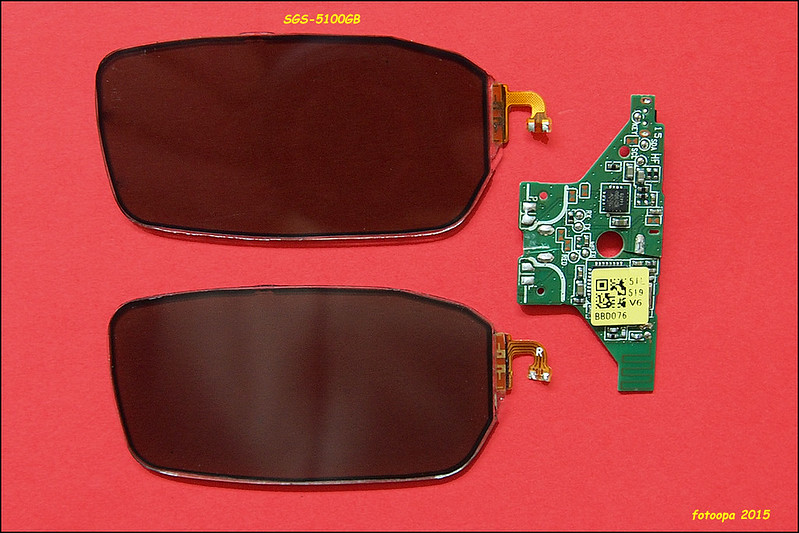
The shutter works with a square wave signal of 12V peak at 1Khz. This close the shutter. To open the shutter the 2 connection pins need the same voltage. This will be 6V here with a difference of less than 5 mV.
There should be no DC offset so as not to degrade the LCD in the the long time.
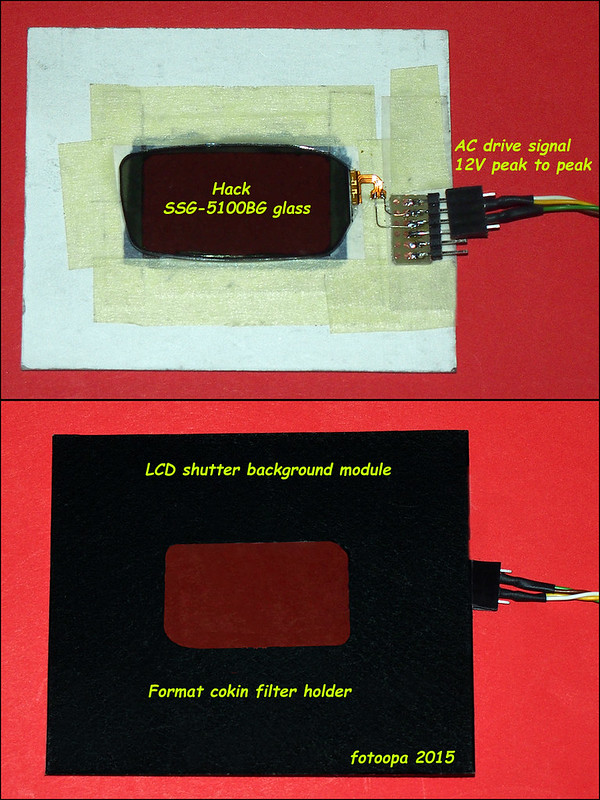
With the LCD shutter open I obtain with an background exposure time of 4msec, a histogram level of 200, once closed, the light value is no longer measurable. Useful area is 24x40 mm. This shutter fits the Cokin filter holder. LCD glass is attached with double adhesive tape.
This setup test the open and close timings:
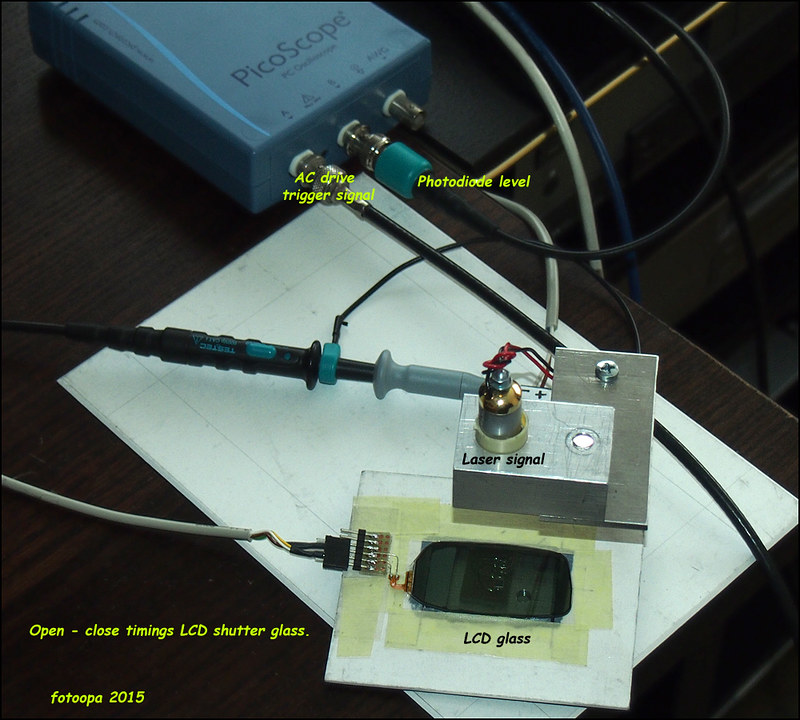
lcd_shutter_open time 4 ms:
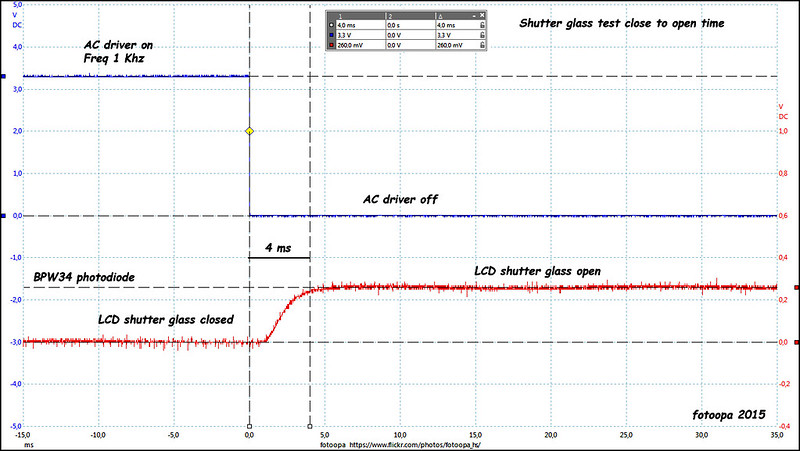
Time to close the shutter glass 320 us:
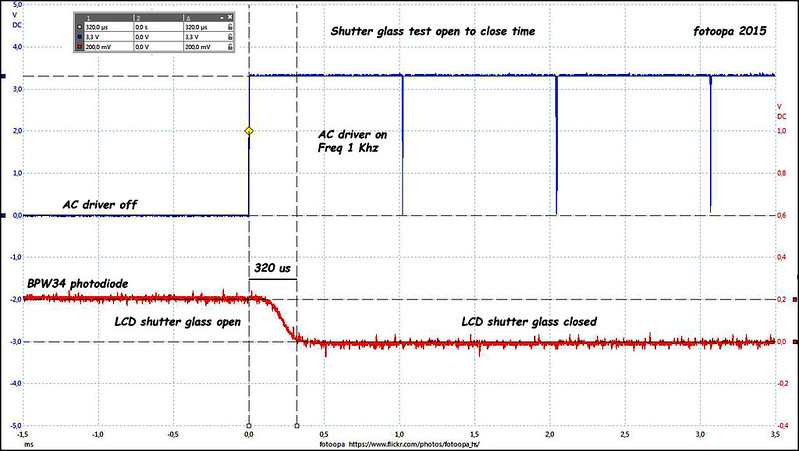
What if you zoom in on LCD glasses ?
If the LCD glasses are open, you see only your original light. But what if you drive the glasses partially to close a part. The glasses come translucent with zero offset voltage at the terminals. I now step by step change the duty cycle so that he begins to suppress the light. I took pictures with the microlens 10X of the structure. With a duty cycle of only 20%, the light is suppressed to 2 stops. Curiously, however, is that a structure is present which gradually black lights. All adjacent surfaces simply mute according to the duty cycle change. This structure is repeated about at each 163 um. The structure remains present in each duty cycle value, but can be seen best with 20% duty cycle.
In picture 2, I strongly increases the contrast from picture1. This was at 20% duty cycle for the square wave driver. In picture 3 and 4 the same but with 100% duty cycle. Even completely black and extreme contrast you still see this structure.
This, just to see how LCD glasses change. For my application, this does not matter. I do not focus on the LCD Only the light is to be blocked, or are allowed to pass. The LCD glass is placed in front of the LED background module and out the focus of the object to photograph. You get over the 10 stops of light reduction.
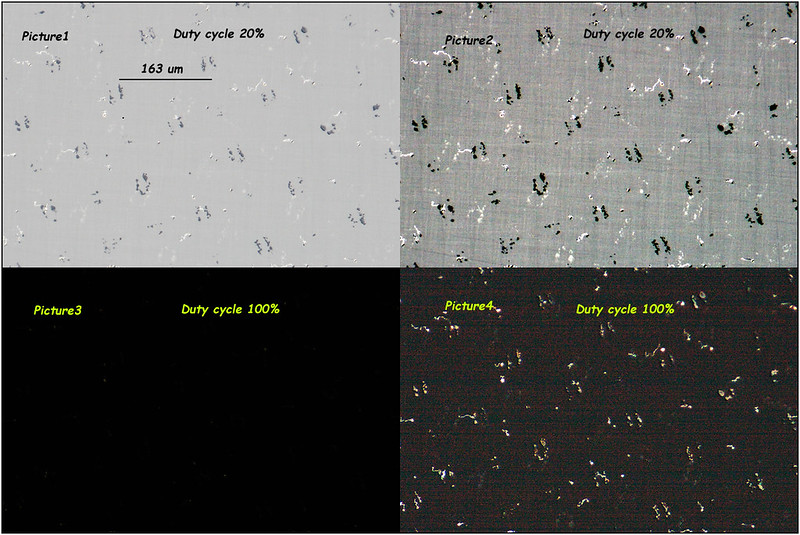
To test the suppression, I first took a picture with open glasses. Via capture NX2, I checked the RGB channels in order to have no saturation. Then I have executed a white balance. The histogram was then 200. Then I took a picture with Closed glasses. On the histogram, you see nothing but a few pixels with 0 to 1 or 2 If you could cover the lens you will see little difference. These were images taken with the focus on the LCD.
If you go a few mm out of focus then you notice anything out black. For my application this works perfectly. I did not know you could arrange so easily to make the transition between light and block light by the duty cycle of the waveform. You can create a variable ND filter just in case you can not control the light source itself. This will give you new opportunities.
I still have a rotary encoder free on my controller. That I could use to adjust the duty cycle and controlling the light source. It also works with the stacking unit. All times and duty cycles are programmable.
More tests will follow, which are also on my Flickr site.
Update:
The above tests were only with backlighting from the color backlight module. Here the light is completely suppressed when the LCD shutter is closed. But now there is a problem if you use the foreground exposure. The light of the foreground module reflects now through the glass. This gives me a green low-level reflected light. Without the glasses it was a low level of white light of the white diffuser. This finally solves nothing. All my work appears for nothing.
What a disappointment!
Frans.



